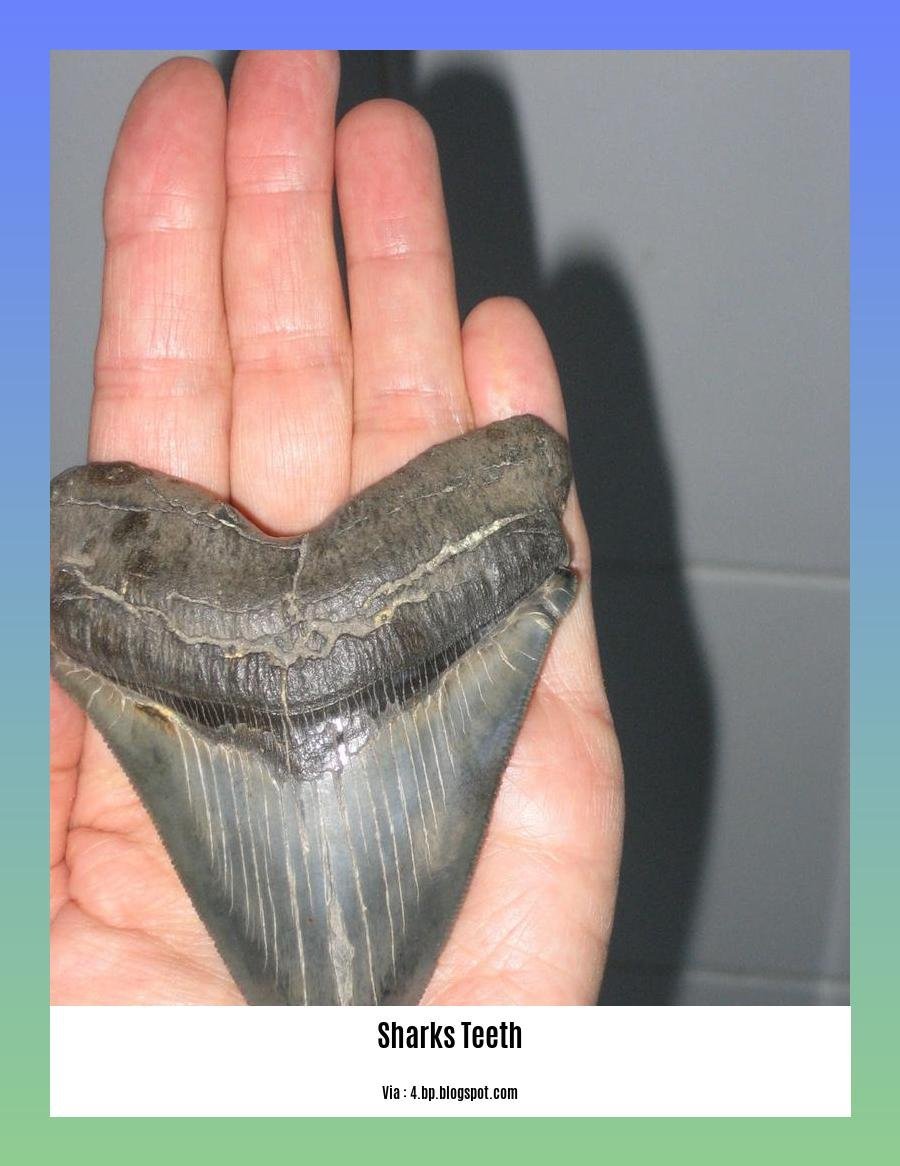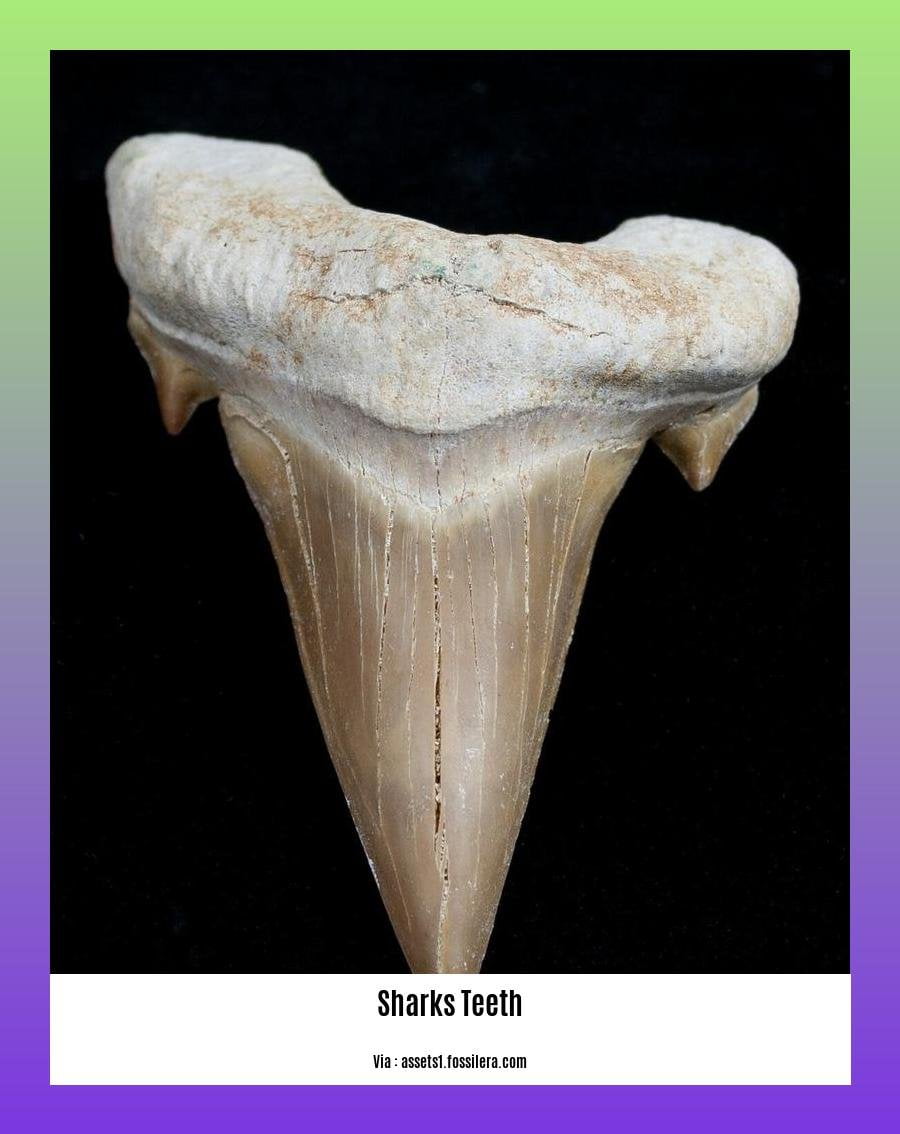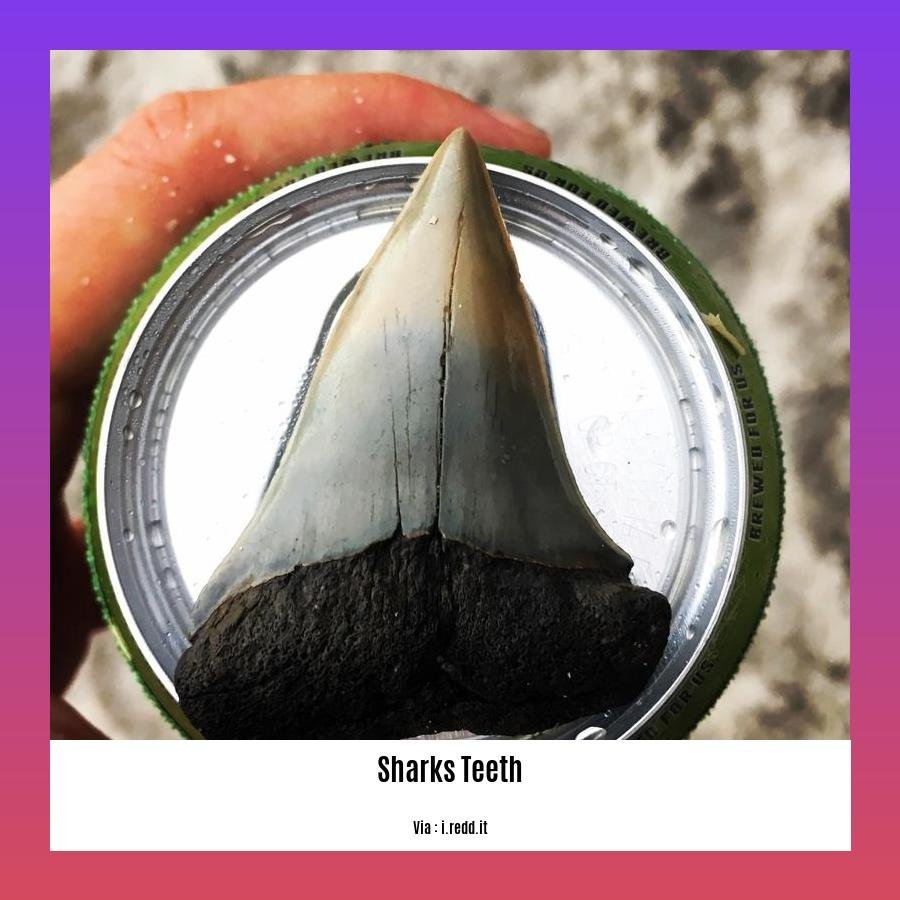Prepare to dive into the captivating world of shark teeth as we embark on a journey to uncover their hidden secrets. Join us as we unveil fascinating facts about these remarkable structures, exploring their composition, diversity, and functional significance. Delving into the evolutionary history of sharks and their tooth replacement processes, we’ll uncover the vital role teeth play in their feeding ecology and predatory behavior. Brace yourself for an informative and engaging adventure as we unravel the mysteries of shark teeth, shedding light on their unique adaptations and their profound impact on the marine ecosystem. Unveiling the Secrets of Shark Teeth: Fascinating Facts and Their Significance.
Key Takeaways:
- Sharks have five rows of serrated teeth for tearing through their prey’s flesh.
- Sharks have a conveyor belt-like system that continuously replaces old teeth with new ones, with larger teeth facing outward.
- Sharks can swallow while swimming by repeatedly opening and closing their jaws.
- The dental membrane produces new teeth throughout a shark’s life, allowing them to grow up to 50,000 teeth in total.
- Shark teeth are composed of a hard material called dentin and are covered in enamel.
Facts About Sharks Teeth

Sharks, the apex predators of the marine world, possess fascinating dental attributes that contribute to their success. Let’s dive into some intriguing facts about shark teeth:
Continuous Tooth Replacement:
- Sharks have a unique conveyor belt-like system for their teeth, constantly replacing old ones with new ones.
- Larger teeth gradually move forward, ensuring a steady supply of sharp teeth for capturing and devouring prey.
Tooth Structure:
- Shark teeth are made of dentin, a hard, bone-like material, coated with enamel, providing strength and durability.
- The enamel, similar to that found in human teeth, protects the teeth from wear and tear.
Number of Teeth:
- Sharks can have up to 50,000 teeth throughout their lifetime, thanks to the continuous production of new teeth by the dental membrane.
- This incredible number ensures a constant supply of sharp teeth for predation.
Tooth Shape:
- Shark teeth come in various shapes and sizes, depending on the species and its diet.
- Sharp, serrated teeth are common for tearing flesh, while flatter, crushing teeth are found in species that feed on hard-shelled prey.
Jaw Structure:
- Sharks can open and close their jaws incredibly quickly, allowing them to swallow while swimming.
- This rapid jaw movement helps them capture and consume prey efficiently.
Evolutionary Significance:
- Shark teeth have evolved over millions of years, adapting to different feeding strategies and environments.
- The diversity of tooth shapes and sizes reflects the evolutionary history and adaptation of sharks to their diverse prey.
These facts about shark teeth highlight the remarkable adaptations and diversity of these marine predators. Their teeth are essential for capturing, devouring, and processing prey, contributing to their success as apex predators in the ocean’s ecosystem.
Do you have any idea how adorable penguins are when they fall in love? come and discover the most fascinating facts about their captivating love life facts about penguins love.
Have you ever wondered why a rabbit’s teeth never stop growing? facts about rabbits teeth has the answers you’re looking for.
Evolutionary History: Tracing the Origins and Diversification of Shark Teeth Over Millions of Years

Sharks, with their age-old presence in our oceans, hold an evolutionary tale that’s simply awe-inspiring. Imagine swimming amidst colossal sharks like Megalodon, over 50 feet long, or encountering the first primitive sharks that lacked eyes, fins, or bones. These fascinating creatures have weathered the storms of five mass extinctions, showcasing their resilience and ability to adapt.
Sharks: Navigating the Evolutionary Tides
Emerging approximately 450 million years ago, sharks predate both trees and dinosaurs, evolving from humble, leaf-shaped fish. Their journey through the eons has been marked by remarkable adaptations and diversification, ultimately leading to the formidable predators we know today.
Modern Sharks: A Triumphant Survival
After several mass extinctions, modern sharks and toothed whales emerged victorious, ruling the marine realm as apex predators. Among them, hammerheads, the late bloomers of the shark family, made their grand entrance between 50 and 35 million years ago.
Megalodon: The Giant That Once Roamed
Megalodon, the colossal shark that captured our imaginations, first graced our oceans 23 million years ago. Its reign lasted for an impressive 20 million years before bowing out around 2 million years ago, possibly due to climate change and prey scarcity.
Sharks: Guardians of Marine Harmony
Beyond their captivating history, sharks play a pivotal role in preserving marine ecosystems and biodiversity. Their conservation is of utmost importance, as they serve as living testaments to our planet’s evolutionary wonders.
Key Takeaways:
- Sharks have a history spanning 450 million years, outliving dinosaurs and trees.
- They evolved from primitive, eyeless, and finless fish, showcasing remarkable adaptations.
- Sharks survived five mass extinctions, demonstrating their resilience and adaptability.
- Modern sharks and toothed whales flourished after mass extinctions, dominating as apex predators.
- Megalodon, the giant shark, roamed the oceans for 20 million years, before disappearing 2 million years ago.
- Conserving sharks is crucial to preserving marine ecosystems and their evolutionary significance.
Sources:
[1] Shark Evolution: A 450 Million Year Timeline
[2] Shark Evolution | The Shark Trust
Tooth Replacement: Understanding the Continuous Growth and Shedding Process
When it comes to dental prowess, sharks reign supreme! With their continuous tooth replacement mechanism, they can grow up to 30,000 teeth throughout their lifetime. These remarkable creatures possess two rows of teeth, with the functional teeth supported by several rows of developing teeth. Now, let’s dive into the mechanism behind this awe-inspiring dental phenomenon.
Tooth Fairy visits the Sharks?
Sharks teeth are embedded in the jaw, not the gums, and are attached by a ligament. As the shark’s tooth becomes worn or damaged, it will be shed to make way for a new one to move forward from the reserve row. This process ensures a constant supply of sharp, functional teeth for hunting and feasting.
So, What Drives the Replacement Process?
Well, it’s all thanks to the dental lamina, a specialized tissue located in the jaw. This tissue continuously produces new teeth, which gradually mature and erupt when needed. Think of it as a shark having a built-in dental conveyor belt!
Benefits of Tooth Replacement:
The constant tooth replacement in sharks provides several benefits:
– Sharp Teeth, Happy Shark: The readily available sharp teeth help sharks capture and devour prey efficiently. They can replace a lost tooth within a matter of days, ensuring they’re always ready for a bite!
– Versatile Diet: Tooth replacement allows sharks to adapt to different food sources. Some sharks have sharp, serrated teeth for slicing flesh, while others have flatter, crushing teeth for crunching on hard-shelled prey.
– Evolutionary Edge: This unique dental adaptation has played a crucial role in the survival and success of sharks for millions of years, making them one of the most successful groups of animals on the planet.
Key Takeaways:
- Sharks have multiple rows of teeth arranged in a conveyor-belt-like system.
- The dental lamina continuously produces new teeth to replace old ones.
- Tooth replacement ensures a constant supply of sharp teeth for effective hunting and feeding.
- Sharks can replace a lost tooth within days, demonstrating their remarkable regenerative ability.
- This dental adaptation contributes to their evolutionary success and adaptability.
References
- Sharks: Tooth Replacement
- Shark Teeth: Everything You Need to Know About Shark Teeth
Ecological significance: Examining the crucial role of shark teeth in feeding, predation, and maintaining the balance of marine ecosystems.
Sharks, with their razor-sharp teeth, rule the ocean’s food chain. These formidable predators are vital to the marine ecosystem’s delicate balance. Let’s delve into the fascinating world of shark teeth and unravel their ecological significance.
Sharks: Masters of the Marine Food Chain
Sharks are apex predators, reigning supreme at the pinnacle of the ocean’s food chain. Their teeth, honed for hunting and devouring prey, play a pivotal role in their predatory prowess.
Tooth Morphology: A Reflection of Diet
Shark teeth come in various shapes and sizes, a testament to their diverse diets. From sharp, serrated teeth for slicing flesh to flatter, crushing teeth for hard-shelled prey, each tooth is uniquely adapted to their specific feeding needs.
Continuous Tooth Replacement: An Evolutionary Advantage
Sharks possess a remarkable ability to continuously replace their teeth. This evolutionary advantage ensures a steady supply of sharp, functional teeth, crucial for maintaining their predatory efficiency.
Role in Maintaining Ecosystem Balance
Sharks play a crucial role in maintaining the balance of marine ecosystems. By preying on weak, sick, or old animals, they help control prey populations and maintain species diversity. This ensures a healthy and vibrant marine ecosystem.
Indicators of Ocean Health
Sharks serve as valuable indicators of ocean health. Their presence and abundance reflect the overall health and stability of the marine ecosystem. Declining shark populations often signal environmental issues, urging us to take action.
Key Takeaways:
Tooth Morphology: Shark teeth vary in shape and size, reflecting their diverse diets.
Continuous Replacement: Sharks continuously replace their teeth, ensuring a steady supply of sharp, functional teeth.
Ecosystem Balance: Sharks help control prey populations, maintaining species diversity and ecosystem balance.
Ocean Health Indicators: Sharks’ presence and abundance indicate the overall health of marine ecosystems.
Conservation Imperative: Conserving sharks is crucial for maintaining healthy and balanced marine ecosystems.
Sources:
Feeding ecology has shaped the evolution of modern sharks
(PDF) Importance of sharks in ocean ecosystem
FAQ
Q1: How many teeth can a shark have in its lifetime?
A1: Throughout their lives, sharks can grow up to 50,000 teeth due to the continuous production of new teeth by the dental membrane.
Q2: What is the composition of shark teeth?
A2: Shark teeth are composed of a hard material called dentin and are covered in enamel, providing strength and durability.
Q3: How do sharks replace their teeth?
A3: Sharks have a conveyor-belt-like tooth replacement system, where old teeth are continuously shed and replaced by new ones that move forward from the back rows.
Q4: Why do sharks swallow while swimming?
A4: Sharks may swallow while swimming to aid in respiration by allowing water to pass over their gills, facilitating oxygen uptake.
Q5: Are sharks born with teeth?
A5: No, sharks are not born with teeth. Their teeth develop inside the jaw bone and then erupt postnatally into the oral cavity.
- China II Review: Delicious Food & Speedy Service - April 17, 2025
- Understand Virginia’s Flag: History & Debate - April 17, 2025
- Explore Long Island’s Map: Unique Regions & Insights - April 17, 2025
















